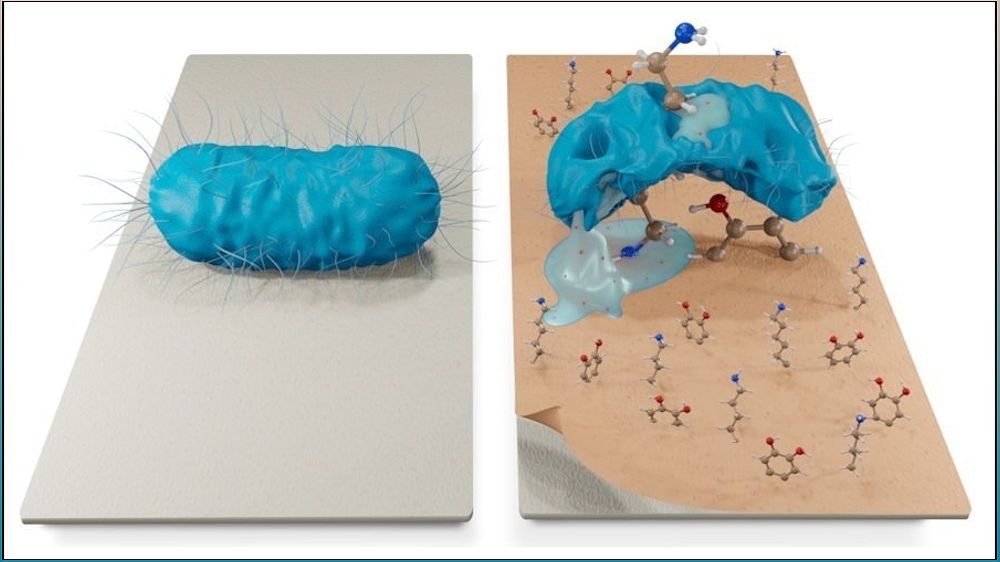Researchers have developed a bioinspired substance that can be used as a coating to protect healthcare textiles and combat the spread of diseases, pathogens, and antibiotic resistance. These environmentally friendly coatings show effectiveness against a wide range of microorganisms and hold great potential for use in clinical settings.
Introduction: Novel Antibacterial Coatings Inspired by Mussels
A team of researchers from the University of Barcelona (UAB) and the Catalan Institute for Nanoscience and Nanotechnology (ICN2) has developed a novel substance to combat the spread of diseases, pathogens, and antibiotic resistance. This substance can be used as a coating to protect healthcare textiles and serves as a practical alternative to commonly used materials such as paper, cotton, surgical masks, and commercial plasters.
The inspiration for this substance came from the compounds excreted by mussels, which allow them to stick to rocks. The study detailing this breakthrough was published in the Chemical Engineering Journal.
The Global Threat of Antibiotic Resistance
Antimicrobial resistance (AMR) is a growing global threat to public health, resulting from the misuse of antibiotics. Bacteria develop resistance to medications and other antimicrobial therapies over time, making it more difficult to treat infections and increasing the risk of pathogen transmission and serious diseases.
To address this issue, the development of new and more effective antibacterial materials is crucial to reduce pathogen transmission and prevent infections.
Reports from the United Nations and the World Health Organization indicate that AMR is a significant global health problem that could surpass cancer as the leading cause of death worldwide by 2050.
The Role of Healthcare Textiles in Pathogen Transmission
Fabrics play a vital role in patient care, but they can also contribute to the spread of bacterial populations. Medical curtains, bed sheets, pillowcases, bandages, gloves, and clothing worn by healthcare professionals all come into direct contact with sutures and wounds, making them potential sources of infection.
Therefore, there has been a surge in research focused on developing antibacterial coatings for medical fabrics.
Bioinspired Coatings: A Breakthrough in Combating Pathogens
The team of researchers from UAB and ICN2 has developed a family of biocompatible and bioinspired coatings by co-polymerizing amino-terminal ligands and catechol derivatives. These coatings, inspired by the adhesive properties of mussels, are effective antibacterial materials due to their ability to undergo chemical changes in the presence of air and humid environments.
This continuous chemical transformation promotes the production of Reactive Oxygen Species (ROS), which can disrupt the membranes of pathogens. Additionally, the manufacturing process generates an excess of surface-free amino groups that contribute to the rupture of pathogen membranes and the production of ROS.
One of the main components found in these coatings is catechol and polyphenol derivatives, which are also present in the strands secreted by mussels for adhesion to rocks in saline water conditions.
Versatile and Effective Antibacterial Action
The newly developed coatings exhibit multi-pathway antibacterial activity and rapid responses against a wide range of microorganisms, including pathogens responsible for various diseases and those commonly found in healthcare settings.
They have shown effectiveness against Gram-positive and Gram-negative bacteria, as well as fungi such as Candida albicans and Candida auris. These coatings have demonstrated their efficacy in moist conditions, which are prevalent in hospitals, thereby reducing the risk of transmission through indirect contact.
The antibacterial action is believed to be a result of a direct contact-killing mechanism, where catechol molecules and other polyphenol derivatives attract pathogens to the coating, triggering various antibacterial pathways that lead to irreversible damage to microorganisms.
Promising Advancements in Antibacterial Materials
The development of these bio-inspired coatings is a significant advancement in the field of antibacterial materials. They are cost-effective, environmentally friendly, and can be synthesized through a simple and scalable process.
The flexibility of these coatings allows for customization in terms of color, thickness, and stickiness, making them suitable for various applications.
As a promising substitute for current antibacterial materials, these coatings hold great potential for future use in clinical settings.
Conclusion: Revolutionizing Antibacterial Materials
The development of novel antibacterial coatings inspired by mussels offers a promising solution to combat the spread of diseases, pathogens, and antibiotic resistance.
These coatings have demonstrated their effectiveness against a wide range of microorganisms, including drug-resistant bacteria and fungi.
With their biocompatible and environmentally friendly properties, they have the potential to revolutionize the field of antibacterial materials and contribute to the prevention of infections in healthcare settings.


